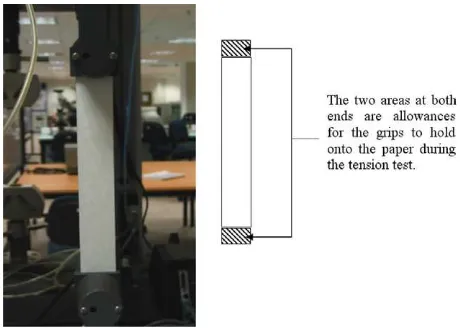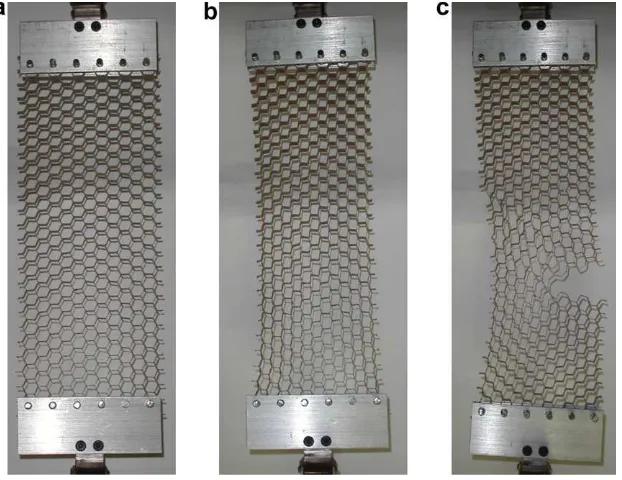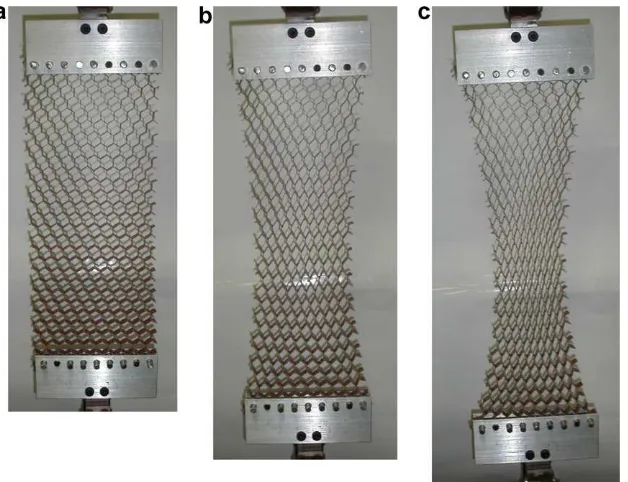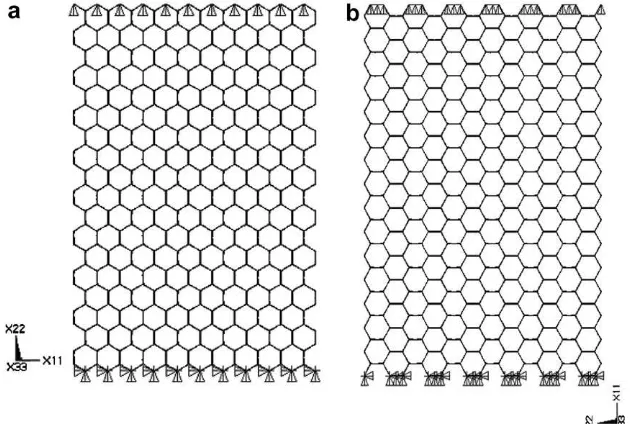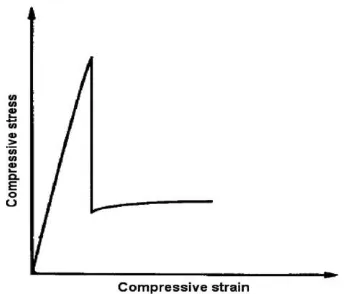Mechanical properties of Nomex material and
Nomex honeycomb structure
Choon Chiang Foo
*, Gin Boay Chai, Leong Keey Seah
Nanyang Technological University, School of Mechanical and Aerospace Engineering, 50 Nanyang Avenue, Singapore 639798, Singapore
Available online 12 September 2006
Abstract
This paper presents extensive test results of linear elastic mechanical properties of Nomex paper and Nomex honeycomb structures. The fundamental mechanical properties of the Nomex paper are then used in the finite element modeling and analysis of Nomex hon-eycomb structures. The finite element results are then compared with the experimental results and with the results using the well known theory from Gibson and Ashby [Gibson LJ, Ashby MF. Cellular solids: structures & properties. Pergamon Press; 1988]. Size effects are observed for the moduli of Nomex honeycombs.
2006 Elsevier Ltd. All rights reserved.
Keywords: Nomex paper; Nomex honeycomb
1. Introduction
Structural sandwich panels are widely used in light-weight construction especially in aerospace industries because of their high specific strengths and stiffnesses. The typical sandwich panel consists of a lightweight core covered by two thin facesheets. Each facesheet may be an isotropic material or a fibre-reinforced composite laminate while the core material may either be of metallic/aramid honeycomb or metallic/polymeric foam.
For numerical impact analyses of honeycomb sandwich structures, several modelling approaches have been identi-fied. One approach utilises standard shell finite elements, and is mainly used for approximation of the global behav-iour in thin sandwich panels [2]. Another approach uses standard two-dimensional shell finite elements for the face-sheets and three-dimensional solid finite elements for the core [3]. Such models are used to predict both local and general responses in the sandwich panel. However, material properties have to be determined for each core type via mechanical testing or analytical approximation. The
accu-racy of the numerical solution depends on a variety of geo-metric and material characteristics of the constitutive materials in the core and facesheets.
Computational expenses for finite element honeycomb sandwich models increase rapidly as the number of cells in the core increase. Therefore, to attain efficiency in numerical analysis, the honeycomb core is usually replaced with an equivalent continuum model. The sandwich panels are analyzed in terms of their effective properties rather than by consideration of their real cellular structure. Con-sequently, the determination of effective elastic properties for this continuum core becomes important.
Various analytical techniques have been proposed to predict the effective continuum properties of the core in terms of its geometric and material characteristics [4–6]. Gibson and Ashby [1] published analytical formulations for the in-plane and out-of-plane stiffnesses, as well as the upper and lower limits of the transverse shear moduli, for a regular hexagonal honeycomb. Their material properties models were investigated by Triplett and Schonberg [7], who conducted a numerical analysis for circular honey-comb sandwich plates subjected to low-velocity impact. They found that numerical results were inaccurate when honeycomb crushing was ignored for the finite element model. Meraghni et al.[5] modified the classical laminate
0263-8223/$ - see front matter 2006 Elsevier Ltd. All rights reserved. doi:10.1016/j.compstruct.2006.07.010
* Corresponding author.
E-mail address:[email protected](C.C. Foo).
theory and applied it on a unit cell to derive the equivalent elastic rigidities for the honeycomb core. Hohe and Becker
[6] also proposed a strain energy-based homogenisation technique to derive the effective elastic properties of any general cellular structure by considering a representative volume element. However, theoretical formulation of the effective elastic constants for the core could be tedious or almost impossible if the sandwich construction is too com-plicated. Even if it is possible, the mathematical derivations for one type of sandwich core might not be applicable to other types.
Extensive literature searches and reviews gave no related significant publications on mechanical and material proper-ties of Nomex paper used in the manufacturing of commer-cial honeycomb structure. With the escalating use of honeycomb in a wide variety of industries especially in the aerospace sector, it is important to determine the mechani-cal behaviour and strength of the hexagonal-celled honey-comb core to within engineering accuracy. The advantage of today’s computer technology enables researchers to model the geometrically correct honeycomb structure and thereby creating a need for the fundamental mechanical properties of the base material of the honeycomb structure. This paper hopes to address the current deficiency and also provides new findings on the analysis of honeycomb structures. The first and foremost step in this paper is to determine the material properties of the Nomex paper used in the manufacture of the Nomex honeycomb. Standard ten-sile tests according to TAPPI standard[8]are conducted on the Nomex paper in the fibre and transverse directions. These results are then used in a numerical simulation to determine Young’s moduli of the honeycomb structure in three direc-tions. Experimental in-plane tensile and out-of-plane com-pressive tests are also carried out on bare honeycomb cores, and results are compared with the numerical values.
2. Experimental investigation
Tensile tests were performed on the Nomex paper of the honeycomb to determine the mechanical properties in the fibre (or machine) direction and transverse (or cross-machine) direction. After which, in-plane tensile tests and out-of-plane compressive tests are conducted to determine the three fundamental Young’s moduli for the honeycomb structures. The core was a 15 mm thick HexWeb A1 Nomex honeycomb core coated with phenolic resin. Each honey-comb had a cell size of 13 mm and a wall thickness of 0.3 mm.
2.1. Testing of Nomex paper
Nomex honeycomb is made from Nomex paper, which is a form of paper made of aromatic polyamide (aramid) fibers. The initial paper honeycomb is usually dipped in a phenolic resin to produce a honeycomb core with high strength and very good fire resistance. Tensile tests were performed on Nomex paper to determine Young’s moduli along the machine direction, Ef and the cross machine
direction, Et. The specimens were manufactured and sup-plied by DuPont, USA.
Each test specimen was of 0.125 mm thickness, 180 mm length and 29.5 mm width according to the standard set by TAPPI [8]. Allowances were made at both ends of each specimen to allow a pair of pneumatic grips to hold onto the ends of the paper during the tensile test, as shown in
Fig. 1. The Instron 5564 tensile testing machine, with a 500 N load cell, was used for this test. The pneumatic grips were attached to the machine such that they were parallel and aligned in a straight line. This was to ensure that the load would act along the length of the specimen. The pres-sure of the grips was set to 6.5 bar to enpres-sure a tight grip that would give an accurate indication of the elongation of the test specimen. The load and displacement data were automatically acquired by a computer via the load cell and an extensometer. All test specimens were pulled at a con-stant rate of 25 mm/min.
2.2. Testing of Nomex honeycomb core
To determine the two in-plane moduli for the bare hon-eycomb cores,E11andE22, tensile tests were carried out in accordance to the ASTM standard for delamination test
[9]. The test specimens measured 130 mm wide by 260 mm long with a test section of 220 mm between the locating pins, as shown in Fig. 2. The specimen width is parallel to the node bonded areas. In a honeycomb cell, the node refers the bonded portion of adjacent ribbon sheets of paper, while the free wall is the cell wall section of single unbonded sheet.
Eight aluminium end plates were fabricated for the ten-sile tests and holes were drilled in them. Nine locating pins were inserted in each pair of end plates for the tests in the
X2-direction, and six locating pins for the tests in the
X1-direction. The honeycomb specimen was then mounted onto the pins, as shown in Fig. 2. The subsequent assem-bled rig for a typical test inX1- andX2-direction is shown respectively inFigs. 3 and 4. For these tests, the laboratory Instron 5564 machine, together with a 5 kN load cell and
an accompanying computer with data logging software, was used. To eliminate the slack in the honeycomb speci-men, a preload was also applied prior to the test. The test specimens were then pulled at a displacement rate of 5 mm/ min. The test was considered void whenever failure occurred at the ends, and a new test was performed.
The compressive tests as shown inFig. 5were carried out to determine the elastic modulus of the bare honeycomb core in the out-of-plane direction,E33, for specimens with 9, 30, 60 and 196 cells. Flat metal plates were used to crush entire specimens at a slow displacement rate of 0.5 mm/min, so as to ensure an even distribution of load throughout the core. It was assumed that during crushing, the change in cross-sectional area of the cell walls was negligible, and it would not affect the elastic modulus significantly.
3. Numerical investigation
A linear elastic numerical analysis was carried out using the commercial finite element software ANSYS v6.0. Shell elements were used to model the honeycomb cells. As many commercial honeycombs are made by expanding
strip-glued sheets, each cell has four free walls of thickness t
and two nodes of double thickness 2t. Fig. 6 depicts the dimensions and symbols pertaining to the honeycomb core. The unit cell was replicated to produce many identical cells, and these cells were then merged to assemble the 200·130· 15 mm3honeycomb core. Cores with a single cell and multi-ple cells are herein termed as unit-cell and multi cells honey-combs, respectively. The adhesive bonding between each cell was assumed to be perfect. Young’s moduli of the Nomex paper in the machine and cross machine directions were taken to be 3.13 GPa and 0.955 GPa respectively.
To simulate the in-plane tensile tests, the nodes at one edge of the honeycomb core were pinned, while at the opposite edge, the nodes were constrained to move only in the pulling direction as shown in Fig. 7. For the out-of-plane compressive test, a downward displacement load was prescribed on all the nodes located at the top of the core. The nodes at the bottom were clamped. A maximum applied strain of 0.002 mm/mm is used in all tests. A mesh convergence study was then carried out to determine the optimum mesh density for the analysis.
Determination of theE-values for the simulated honey-comb requires stress and strain values. The reaction forces in each node on the constrained bottom edge are added up to give the total reaction force,F. The stress is calculated from
r¼F
A ð1Þ
The theoretical area for a single cell isA11= (h+lsinh)b inx11 direction andA22= (lcosh)b in x22direction where the variablebis the core thickness (or height) and the other variables are defined inFig. 6(a). For a multi cell honey-comb in x11 direction, the width is p cells (p= 12 for 13 mm cell size) and therefore the area is
Fig. 2. Tensile test specimen with pinned ends (X2-direction test).
A11¼pðhþlsinhÞb ð2Þ
Inx22direction, the width isq cells (q= 10 for 13 mm cell size)
A22¼qðlcoshÞb ð3Þ
A prescribed displacement is applied on the upper line of the model. The strain is calculated from
e¼LL0
L0
¼ d
L0
ð4Þ
where dis the displacement and L0is the initial length of
the multi cell honeycomb. The height for the multi cell hon-eycomb in x11 direction is r cells (r= 15 for 13 mm cell size). The initial length is then defined by
L0¼ ð2rþ1Þ c 2
ð5Þ
Inx22direction, the height isscells (s= 18 for 13 mm cell size), and then the initial length is
L0¼shþ ðsþ1Þlsinh ð6Þ
Young’s modulus is then calculated from Hooke’s law
E¼r
e ð7Þ
4. Results and discussion
Tensile tests were carried out on the base paper material to determine its mechanical properties. In total, eight tests were performed for the fibre and transverse directions, and typical load–strain curves are shown in Fig. 8. The test results are consistent and thus reliable. Wrinkling of the Fig. 4. Tensile test of a Nomex honeycomb in theX2-direction.
Fig. 5. Compressive tests on bare honeycomb cores.
2t
t
l h
X1
X2 L
W
specimens was observed when the load reached about 300 N and 170 N in the fibre and transverse directions, respectively. Hence to get a good prediction of the linear elastic material properties, the stress–strain data were ana-lyzed up to the load before wrinkling. The average results of Young’s moduli obtained from the eight tests in both directions are 3.40 GPa and 2.46 GPa along the fibre and transverse directions, respectively.
Experimental in-plane pinned tensile tests were con-ducted to examine the in-plane behaviour of the bare hon-eycomb cores. The load response of the honhon-eycomb
specimens with incremental end elongation for the
X1- andX2-directions are plotted inFig. 9. As can be seen
in the figure, the results are consistent and thus reliable. Elastic region was observed over a displacement of 38 mm and up to a load of 91.0 N in the X1-direction, and 50 mm at a load of 111.5 N in the X2 direction (see
Fig. 9). Plasticity then occurred due to debonding between the bonded papers, resulting in permanent failure to the specimens. Fig. 10 further illustrates the deformation of the honeycomb core under tension for both FEM and experimental cases. The results agree well, and the Fig. 7. Finite element model of the honeycomb structure inx11andx22direction.
Fig. 8. Tensile curves of Nomex paper. (a) Fiber direction; (b) Transverse direction.
0 20 40 60 80 100 120 140
0 10 20 30 40 50 60
Extension, mm
Load, N
0 20 40 60 80 100 120 140 160 180
0 20 40 60 80 100
Extension, mm
Load, N
deformed shape of the honeycomb is represented well using the numerical simulation.
Out-of-plane compressive tests on bare honeycombs were also carried out.Fig. 11shows a typical stress–strain curve obtained from the compressive tests. The compres-sive stress increases almost linearly with the strain due to the elastic bending of the thin cell walls. This linear elastic regime terminates with the onset of fracture: the stress first reaches a maximum, before it drops to a lower level. Fol-lowing which, the compressive stress is maintained at a nearly constant level. Audible cracking was observed dur-ing this process in the tests. Similar behaviour has been reported by other researchers[10]. Fracture appears to be the dominant failure mode for these Nomex honeycombs under compression.
The experimental, numerical and theoretical Young’s moduli for a Nomex honeycomb core of nine cells are pre-sented inTable 1. The numerical and experimental results compare well, with a maximum error of 12% forE33. How-ever, the experimentalE33is 27% greater than the theoret-ical value. One reason for this large discrepancy could be that the theoretical formulations were derived for an iso-tropic material, but Nomex paper is anisoiso-tropic. Another reason could be due to the size effect of the whole
honey-comb core. For the theoretical formulations in [6], a unit honeycomb cell was considered. However both numerical and experimental results indicate that Young’s moduli in
X3exhibit a dependency on the size of the honeycomb core. Interestingly, the theory states that the in-plane moduli (E11 andE22) are independent of the core size, andE11 is equivalent toE22. However, the numerical and experimen-tal values forE11 andE22show otherwise.
Fig. 12illustrates the variation of E33with the number of cells in the core. The theoretical value is independent of the number of cells. On the other hand, both numerical and experimental values decrease as the number of cells increase, and the former converges to a value of 100.7 MPa. Since the modulus is inversely proportional to the area of the specimen in Eq. 1, this result could be expected. This also highlights that Young’s moduli for a particular configuration of honeycomb core are not solely dependent on the cell geometry, but also on the number of cells. Tests on a larger sample of specimen sizes may be required to form a clearer pattern of the influence of the number of cells onE33. One constraint of the Instron testing machine was that it was not suitable for carrying out compression on large honeycomb cores whose contact areas were larger than that of the load cell.
5. Conclusion
Experimental tests were performed on the base material of Nomex honeycomb to ascertain its properties. These findings were then used in numerical analyses for static ten-sion and compresten-sion on bare honeycombs. Young’s mod-uli of the bare honeycomb obtained numerically showed Table 1
Comparison of Young’s moduli (MPa) for Nomex honeycombs with nine cells At an applied strain of 0.125 At an applied strain of 0.100
Fig. 10. Comparison between the deformation of experiment and finite element method.
Fig. 11. Compressive tests on bare honeycomb cores.
40
good comparison to the experimental values, with differ-ences up to a maximum of 12%. It was also found that
E33 decreases with increasing number of cells. Young’s moduli of the bare honeycomb are dependent on the size of the specimen.
References
[1] Gibson LJ, Ashby MF. Cellular solids: Structures & properties. Perg-amon Press; 1988.
[2] Meo M, Morris AJ, Vignjevic R, Marengo G. Numerical simulation of low-velocity impact on an aircraft sandwich panel. Compos Struct 2003;62:353–60.
[3] Aktay Levent, Johnson Alastair F, Holzapfel Martin. Prediction of impact damage on sandwich composite panels. Comput Mater Sci 2005;32:252–60.
[4] Burton WS, Noor AK. Assessment of continuum models for sandwich panel honeycomb cores. Comput Meth Appl Mech Eng 1997;145:341–60.
[5] Meraghni F, Desrumaux F, Benzeggagh ML. Mechanical behavior of cellular core for structural sandwich panels. Composites: Part A 1999;30:767–79.
[6] Hohe Jorg, Becker Wilfried. A mechanical model for two-dimen-sional cellular sandwich cores with general geometry. Comput Mater Sci 2000;19:108–15.
[7] Triplett Matt H, Schonberg William P. Static and dynamic finite element analysis of honeycomb sandwich structures. Struct Eng Mech 1998;6:95–113.
[8] TAPPI. Tensile properties of paper and paperboard (using constant rate of elongation apparatus), 1996.
[9] ASTM. General products, chemical specialities and end use products, 1998.
